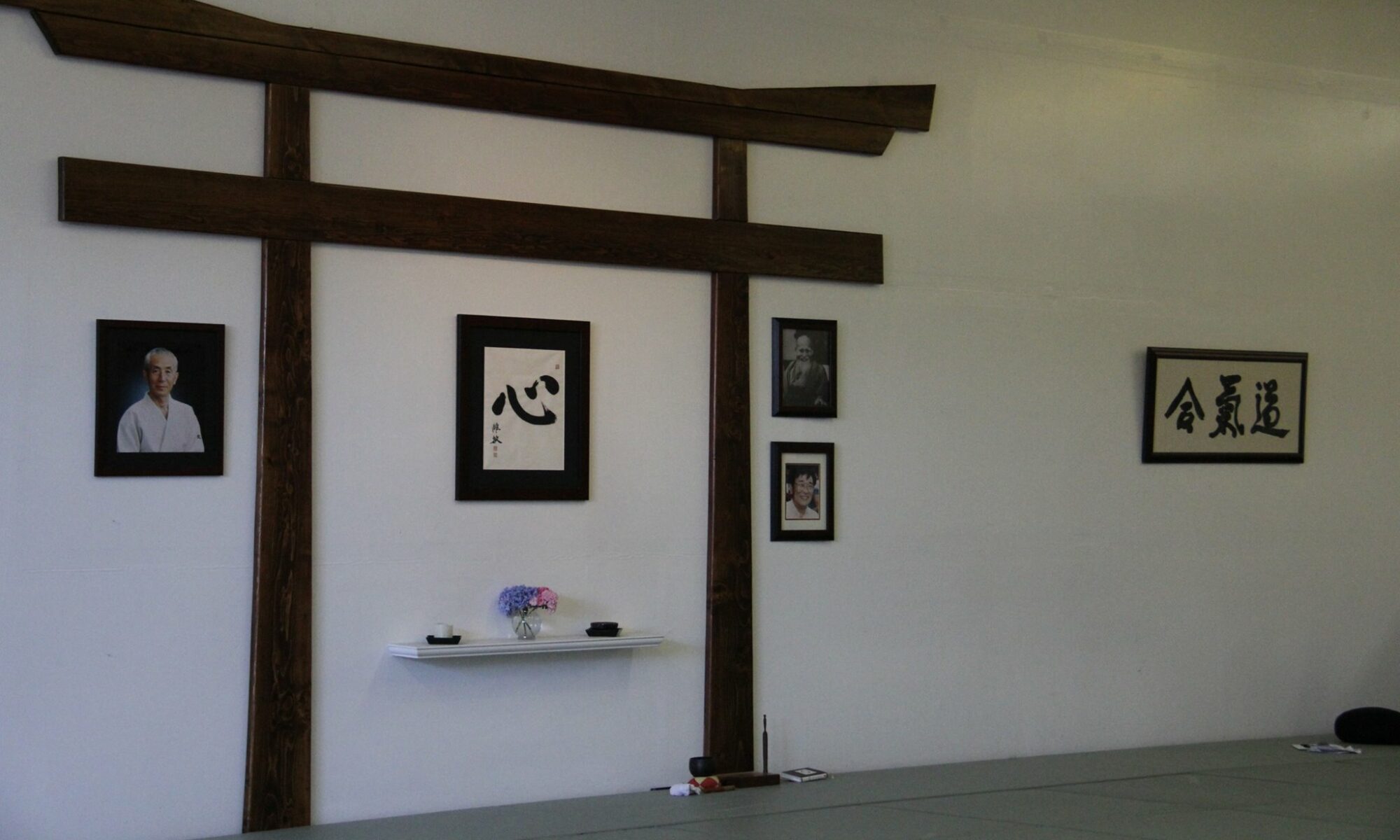We come to our dojo to train so that we’re better able to apply the principles of aikido in our daily lives.
Aikido is a budo, a martial practice that focuses more on how to apply the learning to our everyday lives than simply learn a set of techniques. This focus requires practice both within the dojo and beyond the dojo and for most (if not all) of us, this can lead to many questions about the nature of practicing Aikido. How do I get this technique to work in the dojo? How does learning these technique translate to practice outside the dojo? And so on… These are good questions and certainly worth contemplating and, over time, like the drops of rain dripping into a muddy pool, things become more clear. We begin to experience practice as a way of life and for Aikido practitioners a way of working toward being in harmony with the energy of the universe.
In the dojo, a goal of much of our Aikido training is to break down the barriers between our mind and body that have developed over our lives. We also learn resilience in the dojo as we take ukemi increasingly better as we progress. Then, as we begin to live more fully integrated and with greater resilience, we can then begin to intentionally polish our habits, disciplines, and behaviors. Although this process certainly starts in the dojo where we can rely on our training partners to give us feedback and support us, much of the polishing is done outside the dojo where we are experiencing life, interacting with others, becoming more aware of our impact on other people and the broader world around us, and ultimately striving to be more effective as human beings. The practice of Aikido is focused on living our lives more fully and with greater connectedness and confidence.

